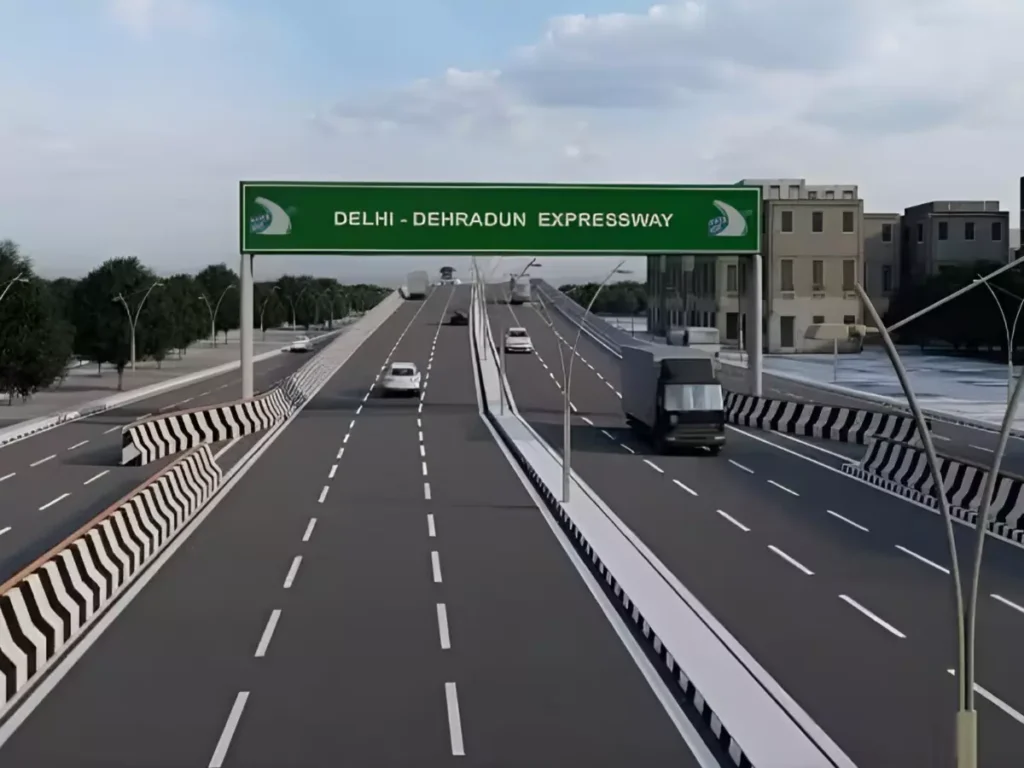Delhi-Dehradun Expressway Nearing Completion: What It Means for Travel, Real Estate, and Tourism in 2025
The much-anticipated Delhi-Dehradun Expressway is on the brink of completion, promising to reshape the landscape of connectivity, real estate, and tourism between the national capital and the scenic capital of Uttarakhand. As 2025 progresses, this transformative infrastructure project is set to become one of India’s most impactful expressways.
Table of Contents
A Game-Changer in Infrastructure Development
The Delhi-Dehradun Expressway is a 210-kilometer, six-lane greenfield expressway designed to cut down travel time, enhance connectivity, and stimulate economic growth. Estimated to cost around ₹12,000–13,000 crore, this expressway is being developed in four phases. Phases 1 and 4 are operational, while the remaining segments are rapidly nearing completion.
A standout feature of this expressway is the 12-kilometer elevated wildlife corridor through Rajaji National Park, the longest of its kind in Asia. This environmentally conscious design element showcases a rare blend of infrastructure advancement and ecological sensitivity, aiming to minimize disruption to wildlife habitats.

Travel Time Slashed, Connectivity Enhanced
Currently, the journey from Delhi to Dehradun takes around 6.5 hours. With the expressway operational, this travel time is expected to reduce dramatically to just 2.5 hours. This reduction will not only ease the burden on existing routes but will also offer a smoother, more efficient travel experience for commuters and tourists alike.
The expressway connects key regions in Delhi, western Uttar Pradesh (Baghpat, Muzaffarnagar, Shamli, Saharanpur), and Uttarakhand, making it a vital corridor for both personal and commercial transit.
Real Estate Boom Along the Corridor
The expressway’s impact on real estate is already being felt, with rising interest in residential and commercial properties along the corridor. Areas in and around Dehradun, including Sahastradhara Road, Rajpur Road, Mussoorie Road, and Canal Road, are seeing increased demand and escalating prices.
Real estate experts predict the development of new townships, housing societies, and commercial hubs to cater to the growing interest from investors, professionals, and retirees looking for better connectivity with metropolitan Delhi while enjoying the tranquility of the hills.
This surge is also expected to fuel the growth of supporting infrastructure such as schools, hospitals, malls, and business centers, thus accelerating the urbanization of semi-rural belts.
A Major Boost to Tourism
Tourism in Uttarakhand is set to benefit immensely from the expressway. With the travel time halved, destinations like Mussoorie, Rishikesh, and Haridwar will become more accessible to tourists from Delhi and the NCR region. This convenience is expected to lead to an increase in weekend tourism and spur investments in the hospitality sector.
Further supporting this tourism surge is an upcoming elevated road project that will provide direct access from Dehradun to Mussoorie, thereby easing congestion within Dehradun and streamlining tourist movement.
Homestays, eco-resorts, and adventure tourism providers are preparing to expand services, anticipating a sharp rise in tourist footfall thanks to improved road infrastructure.
Economic and Environmental Considerations
The economic benefits of the expressway extend beyond travel and tourism. Enhanced connectivity is expected to boost trade and logistics between Delhi and Uttarakhand. Local industries, agriculture, and small businesses will gain better access to markets, creating opportunities for growth and employment.
Construction of the expressway has also focused on environmental sustainability. Wildlife corridors, underpasses, and eco-friendly materials have been integrated into the design to minimize the ecological footprint. Measures like noise barriers and landscape restoration are part of the broader strategy to balance development with conservation.
Delays and Challenges
Despite its promise, the project has faced hurdles, primarily related to land acquisition and environmental clearances. In particular, disputes in Mandola, Ghaziabad have delayed Phase 4, pushing back the overall completion timeline.
Nevertheless, authorities are optimistic about a full launch by late 2025. The National Highways Authority of India (NHAI) continues to work through these challenges to ensure timely delivery.
Conclusion
The Delhi-Dehradun Expressway is poised to become a symbol of modern India’s infrastructural evolution. By significantly reducing travel time, boosting regional real estate markets, and enhancing the tourism experience, this expressway will serve as a backbone for economic and social transformation in North India.
As the finishing touches are laid and final phases come online, residents, investors, and travelers alike eagerly await a smoother, faster, and more scenic journey from Delhi to Dehradun. In 2025, the expressway isn’t just a road—it’s a new route to opportunity.










